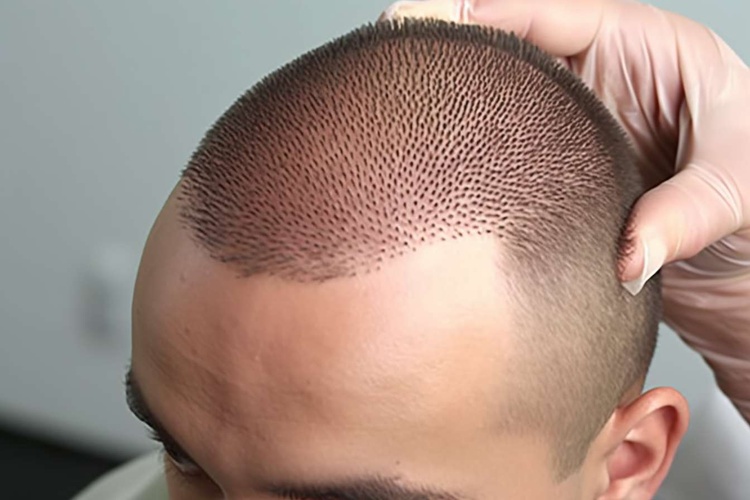Modern Techniques and Restoration Process for Hair Loss
Hair restoration has evolved significantly over the past decades, offering effective solutions for individuals experiencing hair loss. This surgical procedure involves moving healthy hair follicles from donor areas to regions with thinning or no hair growth. Modern techniques have revolutionized the field, providing natural-looking results with minimal scarring and faster recovery times.

Hair restoration represents one of the most effective long-term solutions for addressing pattern baldness and hair loss. The procedure has gained widespread acceptance due to technological advances that have improved both the aesthetic outcomes and patient experience. Understanding the fundamentals of this medical procedure helps individuals make informed decisions about their hair restoration journey.
Overview of Modern Hair Transplant Techniques and Their Purpose
Contemporary hair restoration primarily employs two main techniques: Follicular Unit Transplantation (FUT) and Follicular Unit Extraction (FUE). FUT involves removing a strip of scalp from the donor area, typically the back of the head, and dissecting it into individual follicular units for transplantation. This method allows for the harvest of a large number of grafts in a single session.
FUE represents a more advanced approach where individual follicular units are extracted directly from the donor area using specialized punches. This technique eliminates the need for a linear incision, resulting in minimal scarring and faster healing. The purpose of both methods remains consistent: to redistribute healthy hair follicles to areas affected by hair loss while maintaining natural hair growth patterns.
Understanding How Hair Transplantation Restores Natural Growth
The success of hair restoration relies on the principle of donor dominance, where transplanted hair follicles retain their genetic characteristics from the donor site. Hair follicles from the back and sides of the scalp are typically resistant to dihydrotestosterone (DHT), the hormone responsible for pattern baldness. When these follicles are transplanted to balding areas, they continue to produce healthy hair throughout the patient’s lifetime.
The transplanted follicles go through a natural growth cycle that includes an initial shedding phase within the first few weeks, followed by a dormant period lasting several months. New hair growth typically begins around the third to fourth month post-procedure, with full results visible after 12 to 18 months. This gradual process ensures that the new hairline appears natural and blends seamlessly with existing hair.
Scalp Preparation and Donor Area Selection Process
Proper scalp preparation begins with a comprehensive consultation where surgeons assess the patient’s hair loss pattern, donor hair quality, and realistic expectations. The donor area selection focuses on regions with the highest hair density and follicles most resistant to future hair loss. Surgeons typically examine the occipital and parietal regions of the scalp, which maintain consistent hair growth throughout life.
Before the procedure, patients receive detailed pre-operative instructions including medication adjustments, alcohol cessation, and specific hair washing protocols. The scalp is thoroughly cleaned and marked to indicate the donor and recipient areas. Local anesthesia is administered to ensure patient comfort throughout the procedure, which can last anywhere from four to eight hours depending on the number of grafts required.
Differences Between Male and Female Hair Restoration Techniques
Male hair restoration typically addresses receding hairlines and crown thinning associated with androgenetic alopecia. The approach often involves creating a new hairline and filling in areas of complete baldness. Surgeons design hairlines that appear age-appropriate and masculine, considering factors such as facial structure and future hair loss progression.
Female hair restoration presents unique challenges as women rarely experience complete baldness but rather diffuse thinning across the scalp. The technique focuses on increasing hair density rather than creating new hairlines. Surgeons must work carefully to avoid disrupting existing hair while adding volume to thinning areas. The donor area selection in women requires particular attention as female pattern hair loss can affect traditionally stable donor regions.
| Procedure Type | Average Cost Range | Key Considerations |
|---|---|---|
| FUE Hair Restoration | $4,000 - $15,000 | Minimal scarring, longer procedure time |
| FUT Hair Restoration | $3,000 - $12,000 | Linear scar, more grafts per session |
| Female Hair Restoration | $5,000 - $18,000 | Specialized techniques for diffuse thinning |
| Robotic Hair Restoration | $8,000 - $20,000 | Advanced technology, precision extraction |
Prices, rates, or cost estimates mentioned in this article are based on the latest available information but may change over time. Independent research is advised before making financial decisions.
The recovery process following hair restoration requires careful attention to post-operative care instructions. Patients must avoid strenuous activities, direct sunlight exposure, and certain medications that could interfere with healing. Regular follow-up appointments allow surgeons to monitor progress and address any concerns during the recovery period.
Hair restoration continues to evolve with emerging technologies such as robotic assistance, stem cell therapy, and improved graft preservation techniques. These advances promise even better outcomes with reduced procedure times and enhanced patient comfort. Success rates for modern hair restoration procedures exceed 95% when performed by qualified surgeons, making it a reliable option for individuals seeking permanent hair restoration solutions.
This article is for informational purposes only and should not be considered medical advice. Please consult a qualified healthcare professional for personalized guidance and treatment.




